
Tippy-Toe Chick, Go! by George Shannon
Early Literacy Aside--Explain: Letting your children know when you really enjoy a book helps them see your own enjoyment. Even doing this small thing helps develop print motivation, a child's interest and enjoyment of books and reading.Early Literacy Aside--Example: Our next book is funny and clever. I enjoy this book because the little chick is the one who is so smart! Listen to what happens. Read the book Tippy-Toe Chick, Go! by George Shannon. [For more participation, which also supports print motivation, have the participants chime in for RUFF-RUFF and tippy-toe, tippy-toe.]
Don't Worry Bear by Greg Foley
 Book Introduction: Our next book is Don't Worry Bear by Greg Foley. [Run your finger under the title.] In this book the caterpillar says the words "Don't worry, bear" over and over again. Let's practice saying that--"Don't worry. bear." Good! . . .As I read the book, I'll point to you all and you'll know to say, "Don't worry, bear." [As you read the book run your finger under the words don't worry bear, as they say these words.]
Early Literacy Aside--Example: You noticed that I ran my finger under the words don't worry bear each time you all said those words. This helps develop your children's print awareness, knowing that print has meaning and that it is the words we read. You can do this with any book you read!
Book Introduction: Our next book is Don't Worry Bear by Greg Foley. [Run your finger under the title.] In this book the caterpillar says the words "Don't worry, bear" over and over again. Let's practice saying that--"Don't worry. bear." Good! . . .As I read the book, I'll point to you all and you'll know to say, "Don't worry, bear." [As you read the book run your finger under the words don't worry bear, as they say these words.]
Early Literacy Aside--Example: You noticed that I ran my finger under the words don't worry bear each time you all said those words. This helps develop your children's print awareness, knowing that print has meaning and that it is the words we read. You can do this with any book you read!
Don't Worry Bear by Greg Foley
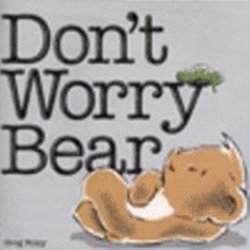
Don't Worry Bear by Greg Foley
Before reading the book talk about caterpillars and how they grow. Ask questions to see what the children already know.Read the title, Don't Worry Bear, and tell the group that these words are repeated throughout the book. Let's say them all together, "Don't worry, bear." The caterpillar keeps saying "Don't worry, bear," and you will say it each time. Let's try it. Read the book Don't Worry Bear by Greg Foley. Early Literacy Aside--Example: Having the children repeat a phrase in the book is the beginning of developing your children's narrative skills. The next step is to have your child retell the story to you. This later helps with your child understanding what he will read when he gets to school.
Buzz, Buzz, Buzz! Went Bumblebee by Colin West
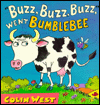 Early Literacy Aside--Explain: Narrative skills can be developed by having your children tell stories. This is easier for some children when they recognize patterns so that they can predict what will happen next.Early Literacy Aside--Example: As we read the book we want to encourage our children to recognize the pattern and to repeat "buzz, buzz, buzz" and "buzz off."
Read Buzz, Buzz, Buzz! Went Bumble-bee by Colin West
Fingerplay: Here is the Beehive
Here is the beehive. Where are the bees? (Hold up fist.)
Hidden away where nobody sees. (Move other hand around fist.)
Watch and you see them come out of the hive. (Bend head close to fist.)
One, two, three, four, five. (Hold fingers up one at a time.)
Bzzzzzzzz all fly away! (Wave fingers.)
Early Literacy Aside--Empower: Children enjoy repeating phrases as they did in our book and song. Please help your children look for patterns in the books and songs you do at home. This helps foster your children's narrative skills which will later help them understand how stories work and will help them understand what they read.
Early Literacy Aside--Explain: Narrative skills can be developed by having your children tell stories. This is easier for some children when they recognize patterns so that they can predict what will happen next.Early Literacy Aside--Example: As we read the book we want to encourage our children to recognize the pattern and to repeat "buzz, buzz, buzz" and "buzz off."
Read Buzz, Buzz, Buzz! Went Bumble-bee by Colin West
Fingerplay: Here is the Beehive
Here is the beehive. Where are the bees? (Hold up fist.)
Hidden away where nobody sees. (Move other hand around fist.)
Watch and you see them come out of the hive. (Bend head close to fist.)
One, two, three, four, five. (Hold fingers up one at a time.)
Bzzzzzzzz all fly away! (Wave fingers.)
Early Literacy Aside--Empower: Children enjoy repeating phrases as they did in our book and song. Please help your children look for patterns in the books and songs you do at home. This helps foster your children's narrative skills which will later help them understand how stories work and will help them understand what they read.
Move Over Rover! by Karen Beaumont

Fidgety Fish by Ruth Galloway
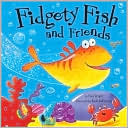
Submitted by participants of Saskatchewan Library Association Conference
Dog Blue by Polly Dunbar
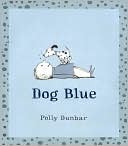
Submitted by participants of Saskatchewan Library Association Conference
Animal Boogie by Debbie Harter
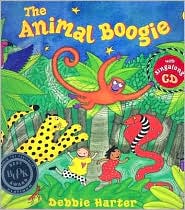
How To Be a Good Dog by Gail Page
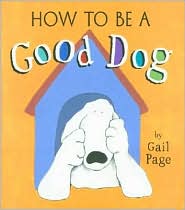
Submitted by Saskatchewan Library Association conference participants
Who Is Driving? by Leo Timmers

Submitted by Saskatchewan Library Association conference participants
Eat Your Peas by Kes Gray
Click below for a storytime plan including the book Eat Your Peas by Kes Gray and highlighting print motivation.

peaspeaspeas1.doc Submitted by participants of Saskatchewan Library Association Conference 2008
Board books
 Early Literacy Aside--Example: Board books are a great investment for babies! They allow babies to handle books freely, and even chew them. Good first choices are board books with pictures of everyday things. Try pointing to the pictures and then to the real objects around you.This helps babies get the idea that pictures and words are symbols for real things, a basic concept for later reading.Share a board book of your choice.
Early Literacy Aside--Example: Board books are a great investment for babies! They allow babies to handle books freely, and even chew them. Good first choices are board books with pictures of everyday things. Try pointing to the pictures and then to the real objects around you.This helps babies get the idea that pictures and words are symbols for real things, a basic concept for later reading.Share a board book of your choice.
Submitted by Cindy Christin, Bozeman (MT) Public Library
What Shall We Do With the Boo-Hoo Baby? by Cressida Cowell
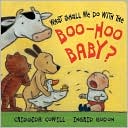
Submitted by Cindy Thompson, Roanoke City (VA) Public Library
Mortimer by Robert Munsch
Mortimer's song is repeated:Clang, clang, rattle-bing-bang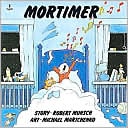
Submitted by Barbara Slough, Glasgow Library, Rockbridge Regional Library (VA)
Pig's Picnic by Keiko Kasza
 Read book Pig's Picnic by Keiko Kasza. Retell the story using props. Have the children retell the story as you maneuver the props.Early Literacy Aside--Example: Using props is one way to help your child remember the story as they try to retell it. When they can retell a story, it helps their understanding.
Read book Pig's Picnic by Keiko Kasza. Retell the story using props. Have the children retell the story as you maneuver the props.Early Literacy Aside--Example: Using props is one way to help your child remember the story as they try to retell it. When they can retell a story, it helps their understanding.
At the end of storytime hold up the handout of Pig's Picnic (below) and demonstrate how you have cut out the pieces so that the children can retell the story. Early Literacy Aside--Empower: You can strength your children's narrative skills, the ability to tell stories, by taking home this storytime handout, having your children cut out the pictures and retell the story. As they retell the story they may add ideas of their own! pigs-picnic-hand-out.doc Submitted by Laura Mikowski, Hillsboro (OR) Public Libraries
Night in the Country by Cynthia Rylant
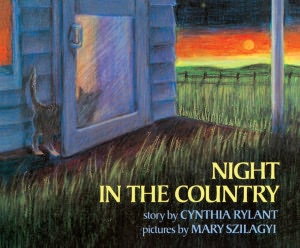
Submitted by Sharon Lindsay, Rockbridge Branch, Bath County (VA) Public Library
Whose House Is This? by Charles Reasoner
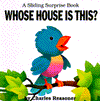 Early Literacy Aside--Explain: There are many ways we can help children enjoy books as we share books together. Children who have positive experiences around books and reading are more likely to stick with learning to read even when it is difficult. I'll be pointing out some ways to share books to make it enjoyable.
As you read the book have children repeat the phrase, "I do. I'm a . . . " with each animal.
Early Literacy Aside--Example: Having the children participate by guessing the animals and responding when the animal appears helps them enjoy the book. This helps support their print motivation.
Early Literacy Aside--Explain: There are many ways we can help children enjoy books as we share books together. Children who have positive experiences around books and reading are more likely to stick with learning to read even when it is difficult. I'll be pointing out some ways to share books to make it enjoyable.
As you read the book have children repeat the phrase, "I do. I'm a . . . " with each animal.
Early Literacy Aside--Example: Having the children participate by guessing the animals and responding when the animal appears helps them enjoy the book. This helps support their print motivation.
Submitted by Tara Smith, Roanoke County (VA) Public Library
Children's names or any words
Early Literacy Aside:--Explain: Separating a word into sound parts is called segmentation. Playing with words this way with your children now will help your children later when they learn to break words into syllables to decode words. Clap childen's names or choose words with different numbers of syllables. Early Literacy Aside--Example: Clapping or tapping helps children hear parts of words which will make it easier for them to sound out words when they learn to read. [for 3 - 5's you can use rhythm sticks]
Submitted by Di Gagnier, Roanoke County (VA) Public Library
